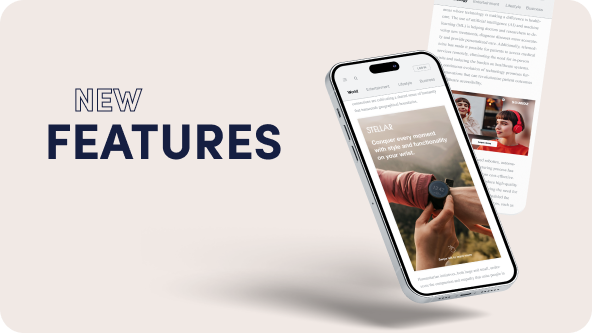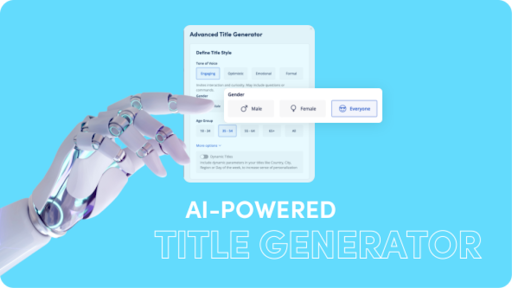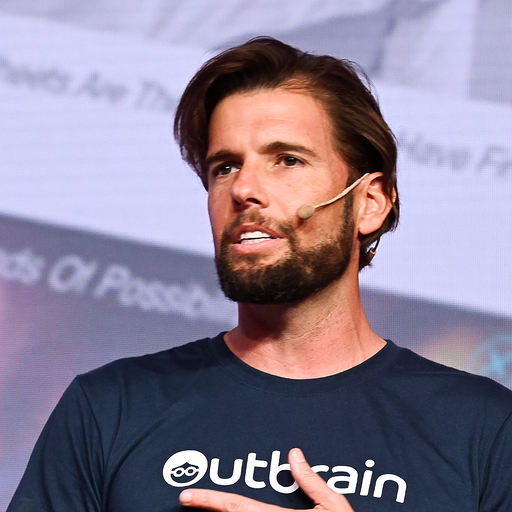How Outbrain Uses Hyper-Personalization to Enhance the Customer Experience

With so many choices and so much interaction online, customers are feeling swamped. They lack the patience and attention for every brand and business, and that’s why it is so critical to deliver experiences that are personalized and compelling.
As a B2B business, Outbrain faces the challenge of standing out in a competitive market while building strong relationships with potential and existing customers. The answer lies in hyper-personalization, a marketing strategy that allows us to create tailored experiences that resonate deeply with each individual customer or lead.
Of course, there can be no hyper-personalization of digital marketing campaigns without marketing automation. Let’s explore how the Marketing Automation team at Outbrain turned the customer journey into a hyper-personalized experience, step by step:
Step 1: Understanding our audience
The journey to hyper-personalization starts by truly understanding our audience. By segmenting customers based on key factors such as industry, company size, and location, we gain valuable insights into their unique pain points and preferences. Using our skills in data analysis, we can uncover hidden patterns and trends in customer behavior, enabling us to make data-driven decisions in crafting personalized experiences.
Step 2: Scaling hyper-personalization via marketing automation tools
The next question is, how to deliver personalized messages to a large and diffuse audience? To execute hyper-personalization at scale, we need the right tools at our disposal. Selecting a robust marketing automation platform is crucial for success. Such a platform should offer comprehensive customer profiling, behavior tracking, and personalization features. By integrating our data sources, including CRM, website analytics, and email marketing platforms, we gain a 360-degree view of customer interactions and optimize their experiences across various touchpoints.
Step 3: Personalizing content and communication
Gone are the days of one-size-fits-all content. Our audience craves personalized interactions that cater to their specific needs. Marketing automation tools empower us to dynamically generate content tailored to each segment’s interests. From customizing website banners and optimizing landing pages to crafting targeted email campaigns, personalization is the key to capturing the attention of potential customers.
Examples of personalized content
Implementing engaging content experiences is a powerful way to drive hyper-personalization. Here are some ways that we recommend to do so:
- Interactive content: By integrating quizzes, assessments, and polls into our content strategy, we can provide personalized outcomes based on user responses. This interactive approach creates a sense of engagement and relevance for each individual.
- Vertical-based content: For our key accounts, crafting personalized content that addresses their specific challenges and goals is essential. Tailoring content to decision-makers within these accounts showcases our understanding of their needs and reinforces our commitment to their success.
- Content personalization with AI: Leveraging AI capabilities within our marketing automation tools, we can dynamically personalize content based on user behavior and preferences. This real-time personalization ensures that users receive the most relevant articles, blog posts, and resources.
- Triggered content delivery: Using marketing automation, we can trigger content delivery based on specific actions or events. For instance, after a lead’s attendance at a webinar, an automated follow-up email can provide additional resources tailored to their interests.
Step 4: Crafting seamless omnichannel experiences
Hyper-personalization requires a seamless customer journey across all touchpoints in the full marketing funnel. Whether our audience interacts with our brand on the website, through email, social media, or mobile apps, the experience should be consistent and cohesive. Marketing automation enables cross-channel synchronization, allowing each interaction to build upon the previous one and fostering trust with our B2B audience.
Step 5: Automating lead nurturing and conversion optimization
Nurturing leads is essential for building lasting relationships. Marketing automation allows us to automate drip email campaigns tailored to each lead’s unique stage in the buying journey and their specific interests. Furthermore, automated lead scoring mechanisms track engagement and behavior, enabling our sales team to focus on high-priority leads and accelerate conversions.
Step 6: Fostering customer retention and loyalty
Hyper-personalization extends beyond acquiring new customers; it’s equally important for nurturing existing ones. We collect feedback and satisfaction surveys via marketing automation tools, so we can continually improve our services and offerings. Personalized upselling and cross-selling campaigns based on customer behavior and purchase history are a solid way to boost customer lifetime value and foster loyalty.
Up Close and Hyper-Personal
With the help of marketing automation, hyper-personalization can help set your business apart by delivering exceptional customer journeys and experiences. By deeply understanding your audience, and creating and delivering engaging content experiences personal to them, you can make your interactions with customers more enjoyable and impactful.
Remember, hyper-personalization is an ongoing journey of continuous improvement. Be sure to analyze data, test different personalization strategies, and seek feedback from customers to refine and optimize your approach. Then you, like Outbrain, can truly maximize the potential of hyper-personalization and transform the way you engage with your audience.
















